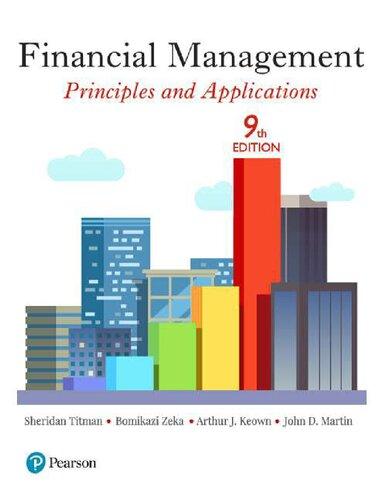Rexon Ltd has just published its financial statements for the year ended 31 December 2018. Rexon Ltd operates a chain of 42 supermarkets in the country.
The income statement and summarised statement of changes in equity of Rexon Ltd, with comparatives, for the year ended 31 December 2018, and a balance sheet, with comparatives, at that date are as follows:
Income statement for the year ended 31 December 2018


Income statement for the year ended 31 December 2018 2018 2017 RsM RSM Revenue, net of sales tax 1,255 1,220 Cost of sales (1,177) (1,145) Gross profit 78 75 Operating expenses 21 29 Profit from operations 57 46 Finance cost 10 10 Profit before tax 47 36 Income tax expense 14 13 Profit for the period 33 23 Statement of changes in equity for the year ended 31 December 2018 Opening balance Profit for the period Dividends Closing balance 2018 RSM 276 33 (8) 301 2017 RSM 261 23 (8) 276 2017 RSM Balance sheet at 31 December 2018 2018 2018 2017 RSM RSM RSM Non-current assets: Property, plant and equipment 580 575 Goodwill 100 680 100 Current assets: Inventories 47 46 Trade receivables 12 13 Cash 46 105 12 785 675 71 746 150 151 301 150 126 276 Equity: Share capital Accumulated profits Non-current liabilities: Interest-bearing borrowings Deferred tax Current liabilities: Trade and other payables Short-term borrowings 142 140 25 167 21 161 297 20 273 36 309 746 785 Notes: 1. Six new stores have been opened during 2018, bringing the total to 42. 2. Six key ratios for the supermarket sector are as follows: (i) Annual sales per store: Rs27.6m (ii) Gross profit margin: 5.9% (iii) Net profit margin: 3.9% (iv) Non-current asset turnover (including both tangible and intangible non- current assets): 1.93 (v) Stock turnover: 20 days (vi) ROE (DuPont Model): 6 Required: (a) The Board of Directors would like to understand the performance of the company and you have been requested to calculate the following ratios for years 2017 and 2018: (1) Gross profit margin (ii) Operating profit margin (iii) Net profit margin (iv) Non-current asset turnover (v) Current ratio (vi) Gearing (vii) Stock turnover (viii) Return on equity based on DuPont Model (16 marks) (b) Comment briefly on the performance of the company. (10 marks) (c) Comment on the effects of the opening of new stores. (4 marks) (d) The Board of Directors are considering leasing as a mode of financing the capital requirements of the company. You are required to explain the different modes of leasing and one which is more appropriate for the company. (5 marks) (e) Advise the Board of Directors on how leasing can help achieve stakeholder objectives, as a lessee. (5 marks) (1) Some of the Board of Directors are not convinced that leasing is a reliable and advantageous mode of financing. Discuss. (10 marks) Income statement for the year ended 31 December 2018 2018 2017 RsM RSM Revenue, net of sales tax 1,255 1,220 Cost of sales (1,177) (1,145) Gross profit 78 75 Operating expenses 21 29 Profit from operations 57 46 Finance cost 10 10 Profit before tax 47 36 Income tax expense 14 13 Profit for the period 33 23 Statement of changes in equity for the year ended 31 December 2018 Opening balance Profit for the period Dividends Closing balance 2018 RSM 276 33 (8) 301 2017 RSM 261 23 (8) 276 2017 RSM Balance sheet at 31 December 2018 2018 2018 2017 RSM RSM RSM Non-current assets: Property, plant and equipment 580 575 Goodwill 100 680 100 Current assets: Inventories 47 46 Trade receivables 12 13 Cash 46 105 12 785 675 71 746 150 151 301 150 126 276 Equity: Share capital Accumulated profits Non-current liabilities: Interest-bearing borrowings Deferred tax Current liabilities: Trade and other payables Short-term borrowings 142 140 25 167 21 161 297 20 273 36 309 746 785 Notes: 1. Six new stores have been opened during 2018, bringing the total to 42. 2. Six key ratios for the supermarket sector are as follows: (i) Annual sales per store: Rs27.6m (ii) Gross profit margin: 5.9% (iii) Net profit margin: 3.9% (iv) Non-current asset turnover (including both tangible and intangible non- current assets): 1.93 (v) Stock turnover: 20 days (vi) ROE (DuPont Model): 6 Required: (a) The Board of Directors would like to understand the performance of the company and you have been requested to calculate the following ratios for years 2017 and 2018: (1) Gross profit margin (ii) Operating profit margin (iii) Net profit margin (iv) Non-current asset turnover (v) Current ratio (vi) Gearing (vii) Stock turnover (viii) Return on equity based on DuPont Model (16 marks) (b) Comment briefly on the performance of the company. (10 marks) (c) Comment on the effects of the opening of new stores. (4 marks) (d) The Board of Directors are considering leasing as a mode of financing the capital requirements of the company. You are required to explain the different modes of leasing and one which is more appropriate for the company. (5 marks) (e) Advise the Board of Directors on how leasing can help achieve stakeholder objectives, as a lessee. (5 marks) (1) Some of the Board of Directors are not convinced that leasing is a reliable and advantageous mode of financing. Discuss. (10 marks)








